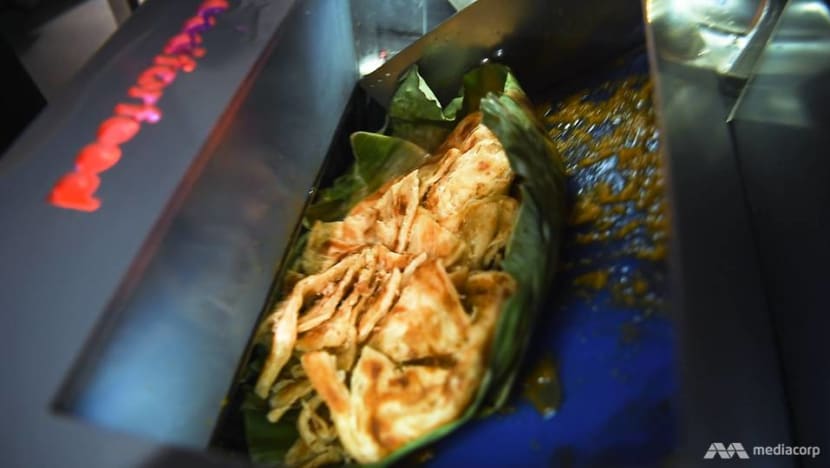From finance undergrad to food waste warrior, with a made-in-Singapore invention
Rayner Loi hit the pause button on school to become the CEO of a technology start-up building AI trackers that make dustbins smart enough to achieve a step change in reducing food waste.
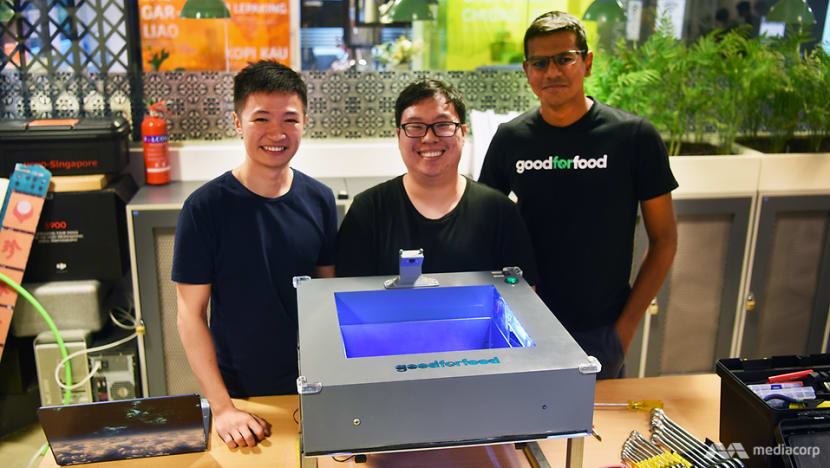
Rayner Loi (left) and his team, with their invention for reducing food waste, one dustbin at a time.
SINGAPORE: As a finance student at the Singapore University of Social Sciences, there was a time when Rayner Loi dreamed of a career in investment or private banking. But that changed with one fateful conversation about three years ago.
The then 22-year-old was working on a service learning project that involved befriending at-risk youth. He had taken a boy out for dinner and, while dropping him off at his doorstep, mentioned to the mother that there was no need to prepare dinner for her son.
“She just broke down and started thanking me profusely,” Loi recounted. “I was like, Auntie, it’s one dinner. I can afford it.
“But then she said that on most days, she can’t afford to put dinner on the table for herself and her son.”
It was this, said Loi, that broke his heart — and moved him to invent a solution to food waste.
“As an ignorant 22-year-old, I didn’t realise that there were such families struggling so badly to the point where even having dinner was a challenge,” he added.
“What made matters worse was that I was also reading about Singapore’s food waste situation, and I couldn’t reconcile (myself to) the fact that we could be throwing away so much good food as a country, when there are families like that struggling with food insecurity.”
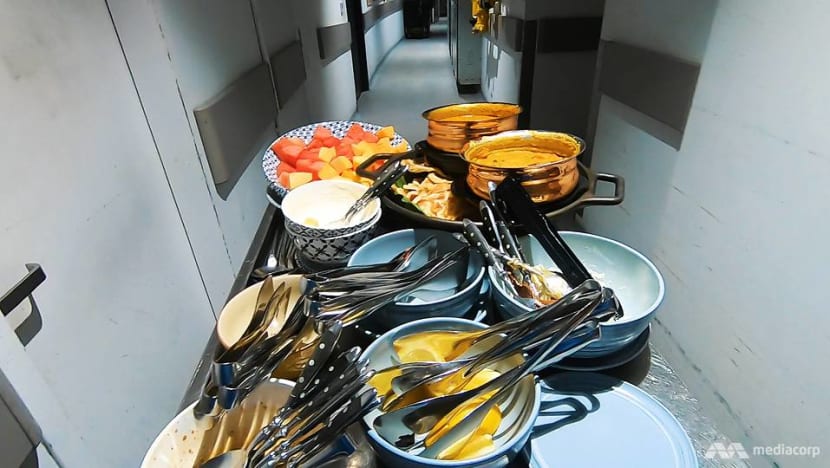
Today, Loi is on a leave of absence from school to work on his new project: A smart food waste tracker that uses artificial intelligence to measure and identify all the food waste that goes into dustbins.
POWERFUL INFORMATION
Through his start-up, Good For Food, he works with businesses such as hotels and dining halls to install his tracker, known as Insight, on top of their existing dustbins.
When food is thrown into a bin, the tracker uses a built-in camera, sensors and image recognition technology to log the food waste generated.
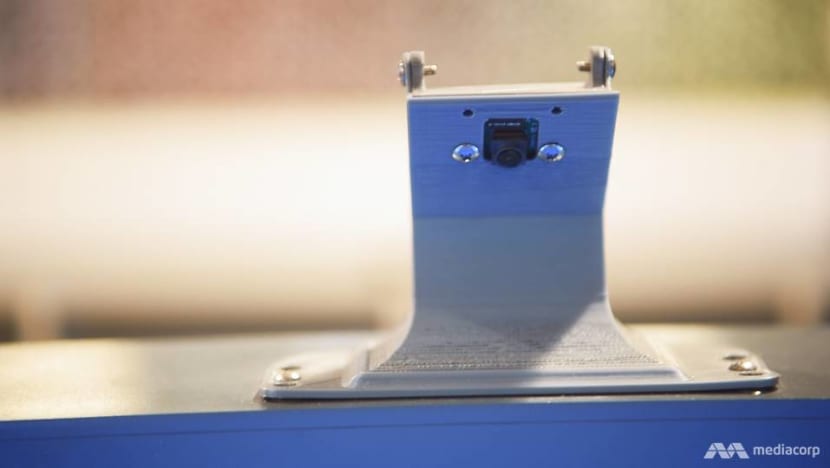
The data collected is automatically sent to the cloud, which Good For Food uses to generate reports — actionable insights as Loi describes them — for clients to act on to reduce their food waste.
“If we can tell a buffet restaurant that for the last 30 days, they’ve thrown away … maybe 10 kilogrammes of curry chicken, on average, for every lunch service, they can then use that information to better plan for future lunch services,” he explained.
“Perhaps they could reduce the amount of curry chicken they put on their buffet line by 5 kg first, and then continue to monitor and see if there can be further optimisations.”
There are now 12 trackers installed, spread across hotels, central kitchens and catering kitchens. But Loi said he looked to hotels as his first market, as they face a unique challenge when it comes to preparing their buffet food.

As they must ensure that the lines are well stocked with food, they tend to err on the side of caution and prepare more than enough, resulting in leftovers.
“The worst thing for (hotels) is to have guests complain that they paid S$80 or S$90 for a buffet and the food has run out, so what the hoteliers normally do is to overproduce,” he said.
“The hoteliers and kitchens know they’re throwing away a lot of food, but they don’t really know how to go about dealing with it.”
Loi said he has seen clients’ food waste fall, on average, by 30 to 40 per cent with the help of the Insight tracker, and their food costs go down by about 3 to 8 per cent.
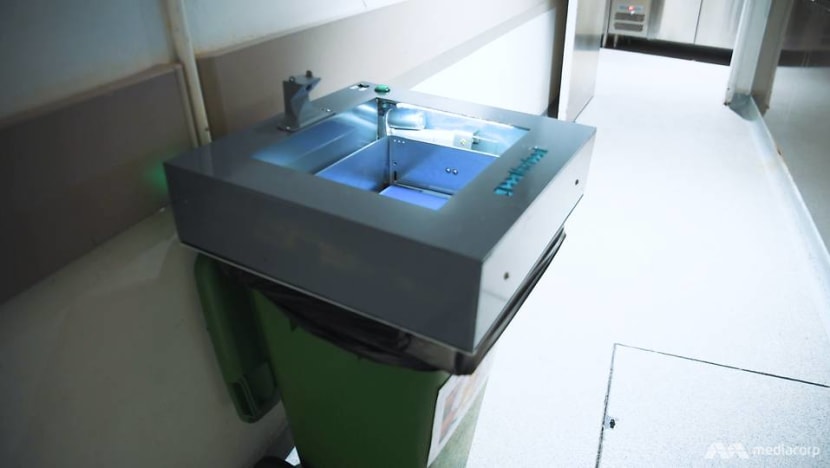
Andaz Singapore, for example, began trials on the Insight tracker last month, and while the hotel’s general manager Olivier Lenoir said it is early days, he expects a food waste reduction of at least 20 per cent.
Prior to that, said Lenoir, the hotel had been manually weighing its food waste and recording the amounts generated. But the waste had not been classified into different categories, such as smoked salmon or orange peels.
“It doesn’t tell us whether we’re throwing away things that are still good to eat or could’ve been kept in a better way,” he said. “The Good For Food system is super simple, and there are no extra steps required.”
The information generated can be powerful: Knowing the exact amounts and specification of what the hotel throws away can go a long way towards reducing its waste, even by making small changes such as reducing the size of its buffet plates.

“Instead of putting all our smoked salmon out on the buffet line on a large platter, we could have three smaller plates, and put just one out at a time,” said Lenoir.
“You’d rather have a small plate that’s full than a big platter that’s half full.”
A LONG THREE YEARS
Today, Good For Food is going from strength to strength, with international hotel brands among its clients, and growing interest from markets such as Jakarta and Macau.
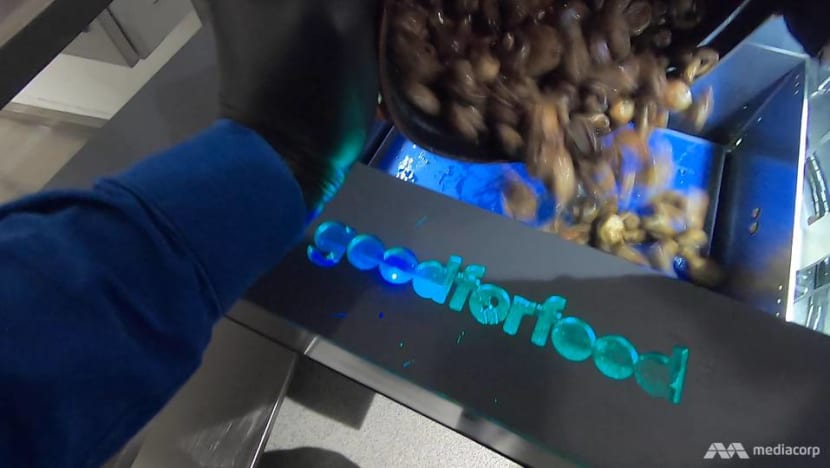
The company, which Loi co-founded in 2017 with his current chief technology officer Keshav Sivakumar, also receives funding from the Temasek Foundations family.
“We’re heartened to see young people like Rayner producing an innovative solution to deal with a food waste problem,” said Temasek Foundation Ecosperity chief executive Lim Hock Chuan.
“We hope more young people will join the ranks of innovators and find solutions to make Singapore a more sustainable and liveable place.”
It may have been just three years since Loi’s life changed, but it was a long journey from finance undergraduate to CEO of his own technology start-up: A journey filled with learning experiences, setbacks and no small measure of hard work.
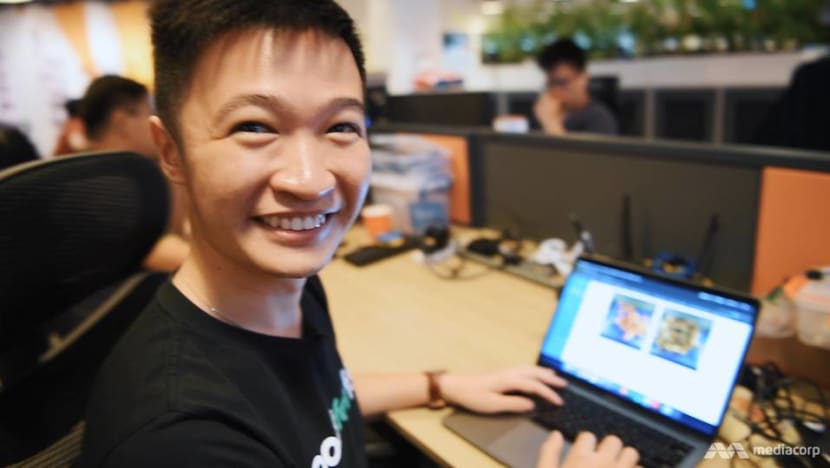
His first idea was a mobile app he started in late 2016 that allowed restaurants with surplus food to sell it to needy customers at a heavy discount.
It was easy to find customers, but he struggled to get restaurants on board, largely because he had been targeting mainly fast-casual restaurants.
“A lot of them are à la carte and cook to order … so under those circumstances, they don’t really have a lot of waste to begin with, which I was pleasantly surprised by,” he said.
“But sad to say, I think they also found that having such a platform was going to be a hassle.”
There were other people, he added, who had the same idea. His co-founder Keshav was one of them. The two met by chance the following year, on an incubator programme for budding entrepreneurs.
WATCH: How they did it (3:53)
When he realised they shared the same passion for solving the food waste problem, he seized the opportunity to get Keshav, then 18, to join him. “He’s an amazing engineer, and I think we complement each other quite well,” said Loi.
“I’m super thankful to him because every business needs a CTO and a CEO … No tech start-up can flourish and grow without both, so it was a blessing from heaven that I could find him in that programme.”
Loi was then juggling his schoolwork with his responsibilities in the start-up. But when the company received its first round of funding in the middle of 2017, he knew it was time to hit the pause button on school.
It was also around that time, he said, that he no longer dreamed of going into private or investment banking. “Previously, I was so excited about modules on portfolio management and finance,” he said.
“But slowly, those things became boring to me. And all I could think about was how I was going to help hoteliers manage their food waste and how I was going to build Good For Food.”

'LEGACY OVER CURRENCY'
With hopes of regional expansion, it is exciting times for Good For Food. But as Loi said, there are challenges aplenty and also times when the work can get monotonous.
For one thing, a lot of time is spent building the image recognition system in the tracker by training the AI to understand the different types of waste generated in any kitchen.
This process, said Loi, is similar to training a toddler to distinguish between a cat and a dog — by generating images of food waste to help the AI tell the difference between, say, roast beef and chicken.

“We have tens of thousands of images in our data bank,” he said. “So you can imagine how many man hours we’re investing in this.”
Every food item thrown away by a restaurant must be manually tagged by a human and verified by another.
And there Loi was, with lead product engineer Adriel Tan, hunched over their keyboards in the Good For Food office, fingers flying as they tagged image after image, oblivious to the flurry of activity around them.
His record? Tagging 700 images in one sitting. “That was all I did the entire day. Adriel was sitting there looking at me … and I was like, I’m not going home until I finish it,” he said, grinning.
“There are 82 images today — I think it’s a good day.”

For now, the monotony of such work is par for the course. As his machine toddler grows up and recognises more images, he hopes that these tasks will take less time in future.
But like a proud parent, Loi said there is not a moment when he is not thinking about his work. While he tries to shut it out on Sundays, he admits it is a challenge.
“As a parent, do you ever not think about your child? You want the best for it, you want to nurture it … have full control over it,” he said. “It’s the same for a start-up.”
He stopped suddenly. “Wah, I sound like a controlling parent,” he added, laughing.
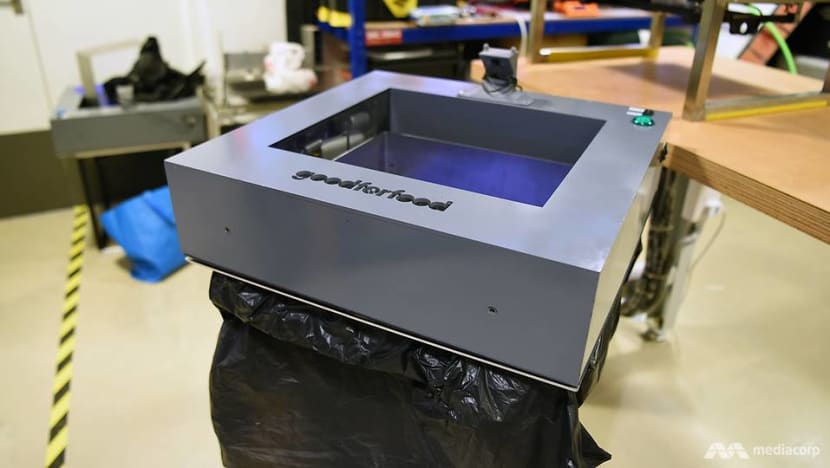
Just as he once dreamed of a high-flying financial career for himself, today he has big dreams for his baby. Beyond going regional, Loi believes there is great potential for working with airlines or cruise ships.
But over the years, he has also realised that his dreams and passion encompass far more than dollars and cents. “Today, what drives me is legacy over currency,” he said.
“What do I want to be known for in 10, 20 years’ time? It’s not so much about me being able to draw a five-figure salary, or Good For Food becoming a billion-dollar unicorn.
“I want to be remembered as someone who took action to tackle global problems and who brought about a serious reduction in carbon emissions by tackling food waste.”
